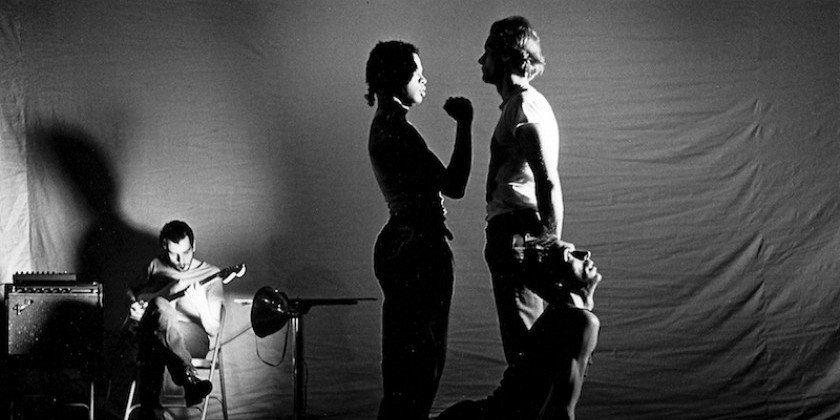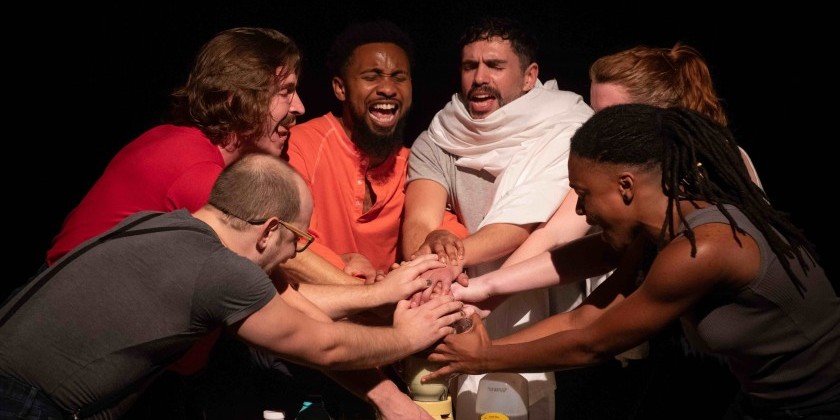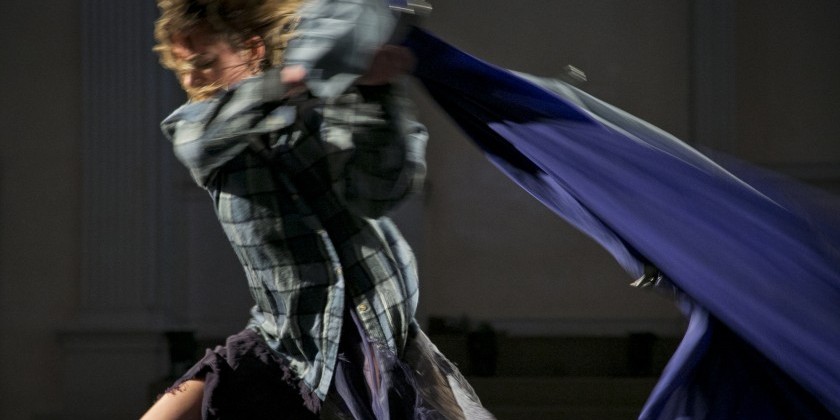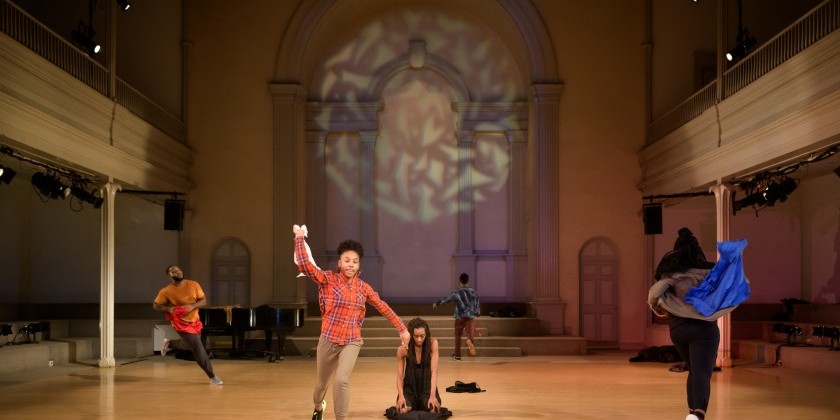The Dance Enthusiast Asks Ishmael Houston-Jones about the Revival of “Them” at Performance Space New York

TDE Asks Ishmael Houston-Jones about the Revival of “Them” at Performance Space New York
June 21, 22, 25, 26, 27 & 28 at 7:30pm, and June 23 at 3pm. On June 27, there will be a post-show talk with Visual AIDS.
Venue: Performance Space New York (150 1st Avenue, NY, NY 10009)
Full price tickets are $25, and student/senior tickets are $15; they can be purchased at performancespacenewyork.org.
In 1986, choreographer Ishmael Houston-Jones, composer/guitarist Chris Cochrane, writer Dennis Cooper, and dancers unveiled THEM at Performance Space 122, the experimental East Village theater. Audiences were presented with an unapologetic and nuanced depiction of gay male sexuality, and were confronted with chilling imagery that encapsulated the horrors of the AIDS epidemic. The reception was mixed to say the least.
The Dance Enthusiast had the opportunity to speak to Houston-Jones about remounting the work at the space where it first premiered, newly named, Performance Space New York.
Trina Mannino for The Dance Enthusiast: Them was first performed in 1986 and then again in 2010 at P.S. 122. And now, for a third time in 2018. Why now?
Ishmael Houston-Jones: Because some asked me [laughs]. . . Jenny Schlenzka, the new director here, organized the East Village series this season since the space was out of the neighborhood for so long [the organization returned to 150 First Avenue after a seven-year renovation process]. She saw Them for the first time in 2011 and described it as sort of a touchstone and part of P.S.’s history.
When it was done in the 1980s, Them was controversial. But it then was celebrated in 2010. Times change. In the 1980s, we were performing Them at the height of AIDS crisis. Though the work isn’t directly about the disease, the imagery associated with it, gay male sexuality and violence, was not what people wanted to see at that time. We had walk outs and protests. In 2010, I think there was enough distance from that time to really see it and be moved.
The Dance Enthusiast: How do you think it will be received today in midst of a tense political climate?
Ishmael Houston-Jones: I really don’t know. I am curious about that. I’m anxious and eager to see. It definitely feels in opposition to what is going on politically.
The Dance Enthusiast: You mentioned the piece grapples with masculinity and its violent underbelly. When remounting this work this year, did you think about the conversations surrounding what some call our culture’s masculinity crisis?
Ishmael Houston Jones: Not really. When, Dennis, Chris and I tackle this work, we try to show a lot of exuberance in midst of the darkness. There are many dance sections that are so full of life. The music is pulsing, throbbing sometimes. Dennis’ text is not as dark that we tend think it is. He’ll kill me for saying this, but it has a sense of nostalgia, a wistfulness. . .
The Dance Enthusiast: You and your collaborators first made this work in your thirties. Now, entering it in your sixties, how have you changed?
Ishmael Houston-Jones: I hope I’ve matured. I think the craft has gotten stronger. I’m clearer with my intentions. I’m clearer with what I do and don’t want to do. I continue to be steadfast about improvisation.
The Dance Enthusiast: How do you reconstruct a work that is based on an improvisational structure?
Ishmael Houston-Jones: I’ve been trying to write about that. I’ve embraced improvisation as the work I’m most interested in doing. A question that I’m grappling with: What does it mean when a work is improvised by a performer, and the performer isn’t you?
My documentation has gotten better, and I try to write a lot. But in the ‘80s, I don’t think we even wrote the structure down. We just knew it.

The Dance Enthusiast: In the early 2000s, there was a period where you didn’t create dances. Why?
Ishmael Houston Jones: It wasn’t because I wasn’t interested, but I never want to make work for the sake of making work. . . At that time, I was interested in dancing with others in their own projects like Yvonne Meier and Lionel Popkin. I began to concentrate on my writing [Houston-Jones’ first book will be published in conjunction with the opening of Them.]
The Dance Enthusiast: During the run of the original Them, you ran into some trouble with the Board of Health because there’s a 50-second section where you danced with a dead goat. Can you talk about what happened?
Ishmael Houston-Jones: People were offended and troubled by it. Some told me that they were praying for my soul. Someone contacted to the Board of Health and I had to talk to them to assure them that the audience or the dancer wasn’t in danger. I had to tell them that the animal was being kept cold. It was a very funny, very strange conversation.
But I think it’s an important part of the piece — especially then. People were dying — my friends, lovers, colleagues. I was going to the hospital and memorial services regularly. I was wrestling with my own fear and handling of death.

The Dance Enthusiast: Why wrestle with a dead goat on stage if you knew that it might alarm people?
Ishmael Houston-Jones: At that time, my fear was palpable. One of my closest friends, John Bernd, was in his last few months. People today don’t see as much the physical manifestations of AIDS because of the drug cocktails that were made more available in 1995. Of course, AIDS still very much exists. But in the ‘80s, you could literally see it on the street, on people’s faces, the scars and the effects of Kaposi. It was horrific. I felt that was needed — especially since I was doing that part at that time — that I needed to cathartically wrestle with what was happening. . . People are still dying from this disease. It can still be a death sentence for many people — men, women and children — around the world. I realize that I’m pushing it in their faces, but it’s important that people witness that.
The Dance Enthusiast: As someone who mentors many young artists, what do you hope to imbue them with?
Ishmael Houston-Jones: Courage, conviction and resistance. . . Courage is necessary. I’m worried for the future of our country. People need to, through their medium — whether it’s art or another form of protest — challenge what is currently happening and not put themselves in silos. That’s not helpful. It’s understandable, especially in marginalized communities, but I think in the end there has to be a coalition and a breaking down of those silos.
The Dance Enthusiast Asks Questions and Creates Conversation.
For more of The Dance Enthusiast Asks, click here.
Share your #AudienceReview of the film or others for a chance to win a prize.















